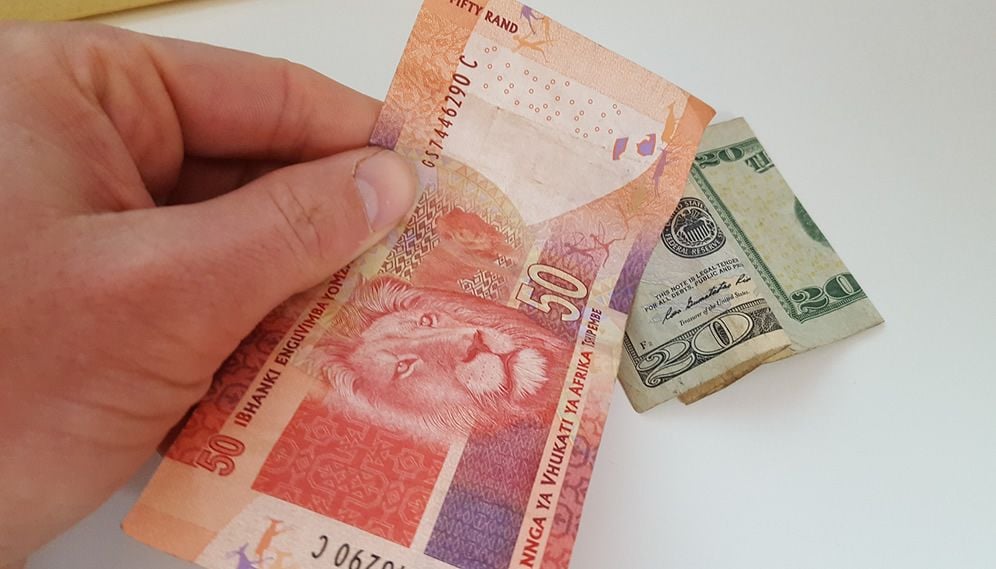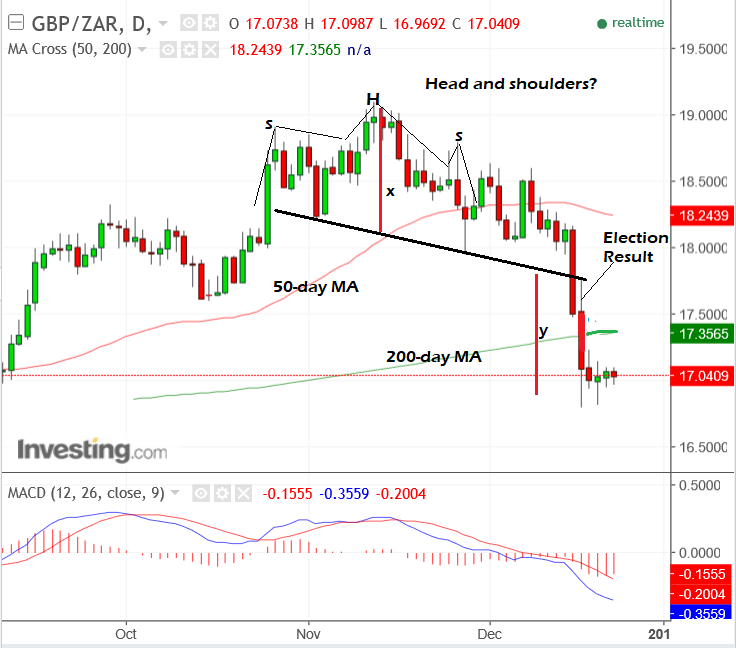Pound-to-Rand Exchange Rate Pre-Xmas Update and 2018 Primer

South Africa’s Rand has held onto gains made since the ANC leadership election and analysts are now looking to February’s credit rating decision as the next main event for the currency.
The Rand made stratospheric gains after the ANC voted for a new and reformist leadership last week - to trade around the 17.00 mark versus the Pound and in the 12.70 area against the Dollar.
Cyril Ramaphosa, the ANC's new leader, is seen by the markets as a positive choice with favourable implications for the economy. Hence the large 7.0% gain in the Rand since the vote.
A rise in foreign investors’ demand for South African government is further evidence of the positive view of the election taken by the markets, and a vote of improving confidence in the economy.
Recent inflows suggest investors are more willing to take a gamble on lending to the South African government, even though the country is still at threat of a major downgrade from Moody's in February 2018.
"The view offshore seems more upbeat, both in the media and within the investor base; foreigners bought R2.8bn of bonds yesterday, a large but not extraordinary amount, but representing the first strong inflow since the downgrades," says John Cairns, an analyst at Rand Merchant Bank.
Standard & Poor’s cut South Africa’s local currency debt rating in November, citing a weaker economy, falling tax revenues and insufficient progress in reigning in spending - which has led the country’s debt pile to continue growing.
A further downgrade, from Moody's, is the biggest risk on the radar for the Rand as it would mean South Africa’s debt is becomes rated as "junk", making the country a persona non-grata to many bond investors.
The world’s pension and insurance funds often have the overwhelming majority of their portfolios concentrated in investment grade bonds, not “junk” bonds.
Most of the world’s bond indices, which investors attempt to mimic, include only investment grade bonds, so outflows from South Africa will increase and inflows will drop dramatically if it gets cut to “junk”. This will put pressure on the Rand.
Whilst the election of Ramaphosa revived hope that downgrade might be averted, the close result between him and his main adversary Nkosazana Dlamini-Zuma, is now seen limiting his power.
Of the six main positions in the ANC that were up for grabs in the election, only three were filled with Ramaphosa allied candidates while the other three went to supporters of Nkosazana Dlamini-Zuma.
There is still some ongoing controversy over 68 votes that went missing in the election of ANC secretary general Ace Magashule, who is Dlamini-Zuma allied and only beat Ramaphosa’s man by 28 votes.
Dlamini-Zuma is the former wife of current President of state Jacob Zuma and so is seen as a continuity candidate. And, in the eyes of financial markets, South Africa is in need of change.
Rating agency Fitch has highlighted the closeness of the election result (2,440 vs 2,261) as a headwind to reform, saying it could clip the wings of the reformist Ramaphosa.
Moody's, however - and more importantly - have acknowledged a "tentative prospect of a shift in policy," and are "cautiously optimistic," about this according to RMB's Cairns.
The fate of another currency, the USD, will be another major driver of the Rand in the coming months. The two are highly correlated (negatively), which means the Rand tends to rise when the US Dollar falls and vice versa.
This is due to the fact that servicing Dollar debt and buying imports becomes more expensive when the greenback rises, which can put pressure on budget and current account deficits.
The outlook is generally negative for the Dollar in 2018, according to several major banks, which could be seen as a positive factor for the Rand.
However, this may be offset by the view that the South African currency is now overvalued. This was recently put forward by UBS economist George Kovacs.
"To us, the best description of the year was one of sideways trade in wide ranges. We would not be surprised if 2018 is more of the same," says John Cairns at Rand Merchant Bank.
Finally, as far as the charts go, the breakdown in GBP/ZAR following the ANC election appears to have run out of steam after reaching the 17.00 level. This may be difficult to break.
A type of topping pattern - perhaps a wonky head and shoulders - formed prior to the election and gave an early hint of the decline that was to come.
The usual way to measure how far these declines will go is to take the height of the pattern at its tallest point and extrapolate it down, as shown on the chart below.
By these methods, we have reached the downside target and the chart is only marginally negative now, with the possibility of a recovery or sideways movement now a likely prospect.

Above: Pound-to-Rand shown at daily intervals.
Get up to 5% more foreign exchange by using a specialist provider by getting closer to the real market rate and avoid the gaping spreads charged by your bank for international payments. Learn more here.




